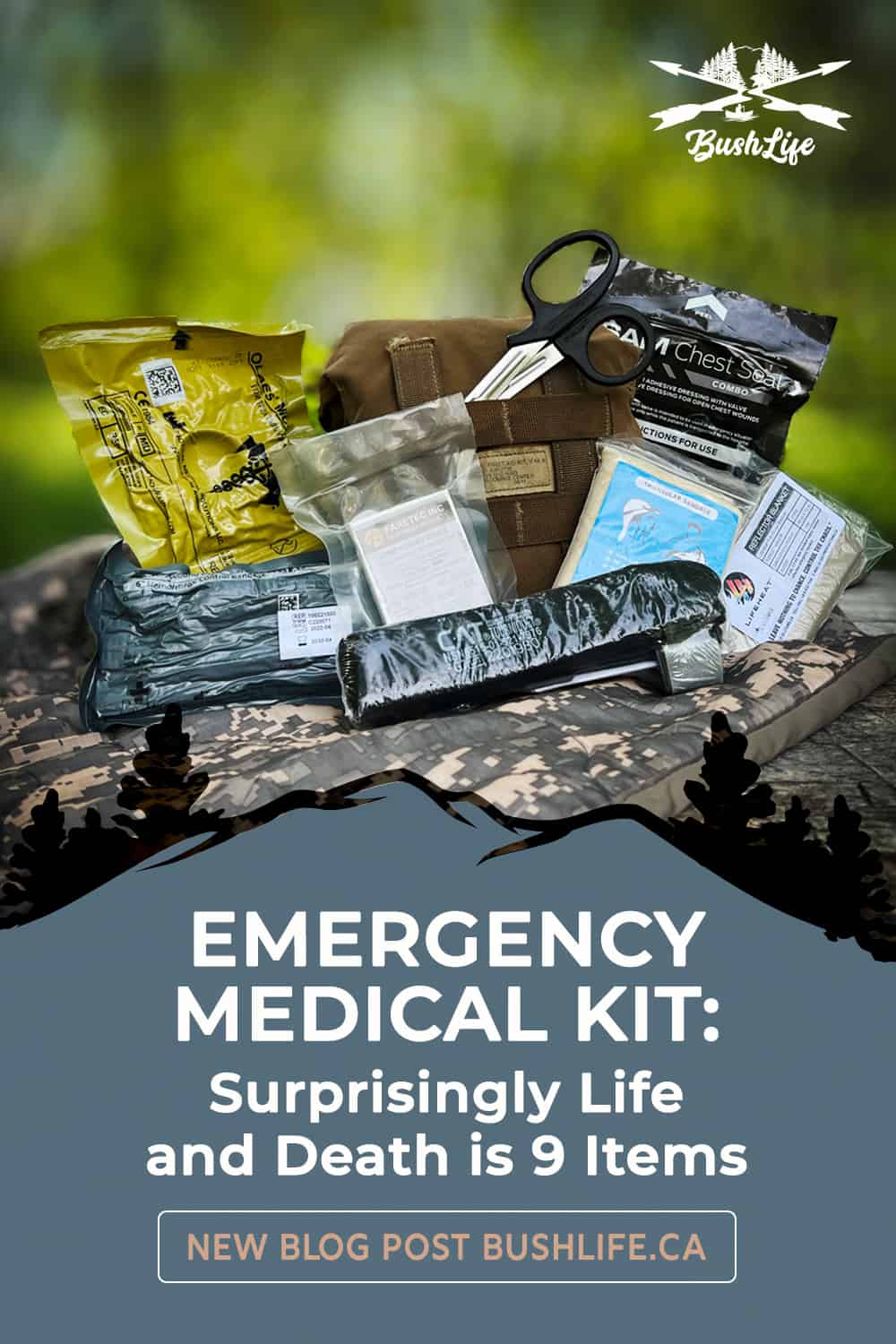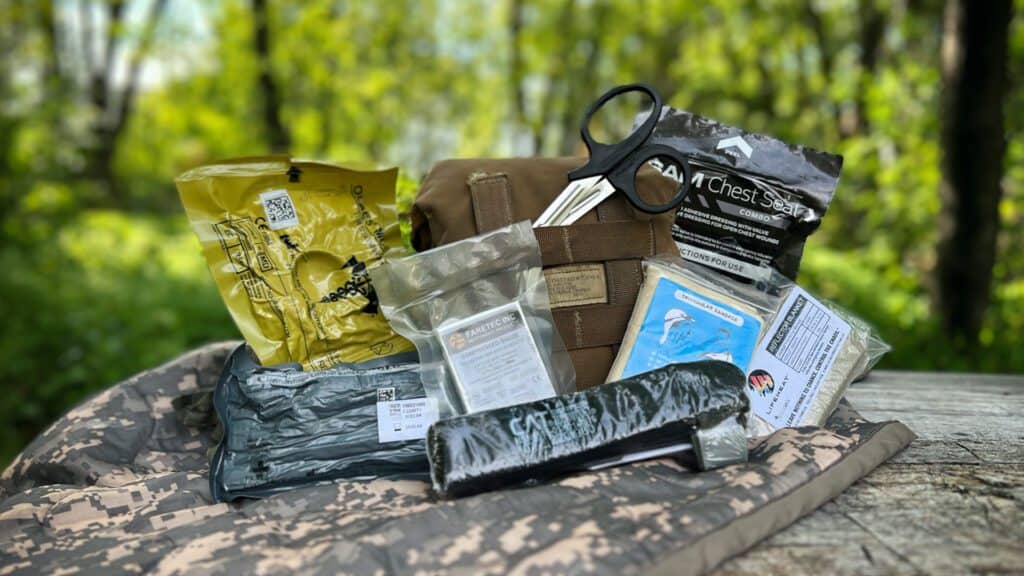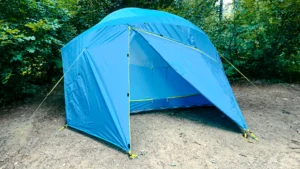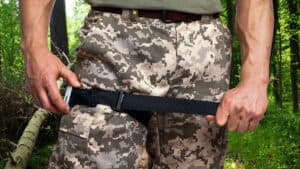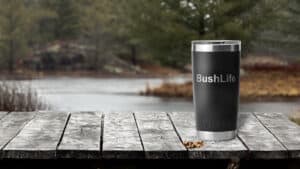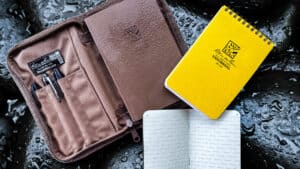Our blog has covered essential gear, survival, fire making, safe drinking water, etc. Even a bit of medical. Now it’s time to dive in a LOT deeper. Unequivocally, the emergency medical kit is one of the most important posts I’ll ever write.
We all carry a first aid kit in our pack when heading into the woods, right? Every gear load out video on YouTube has one, even from the guys that dole out the wrong information. It’s that little kit most people toss in their pack or car. It’s on the list as a basic kit ANYWHERE you look. But do you know what’s in yours? Do you replenish the items you use? Do you replace expired components?
Discloure: Posts may contain affiliate links. Purchases made through our links result in a small commission to us at no charge to you. We only recommend products that meet our brand standards based on testing and first hand use by our authors.
- First Aid Kit vs Trauma or Emergency Medical Kit
- What if I Know Nothing About Medical Emergencies?
- Major Injuries and Trauma
- Infinite Applications of the Emergency Medical Kit
- Item 1: CAT Tourniquet
- Item 2: 4″ Modular Bandage
- Item 3: 6″ Israeli Bandage
- Item 4: Chest Seal
- Item 5: Compressed Gauze
- Item 6: Triangular Bandage
- Item 7: Trauma Shears
- Item 8: Emergency Blanket
- Item 9: Storage
- I Got My Emergency Medical Kit, But Now What?
- Emergency Medical Kit
First Aid Kit vs Trauma or Emergency Medical Kit
While I’m drilling you on your first aid kit, this post isn’t even about that. A first aid kit, as we know, is fantastic for minor injuries like cuts, scrapes, blisters, etc. We don’t even need to talk about technique – if you don’t know how to apply a Band-Aid, stop reading my blog right now and NEVER head into the woods! The store-bought first aid kits are pretty self-explanatory and often include instructions.
Today, you will learn about some army ranger or EMT gear and how and when to use these items. In other words, we are dealing with trauma or major injuries, and for that, we need an emergency medical kit. If I am being honest, it’s a subject that scares the crap out of me and most other people, for that matter. The good news is the sooner you learn it and get it out of the way, the sooner you can save yourself or a loved one.
What if I Know Nothing About Medical Emergencies?
Relax, I’m not a doctor either! To become a doctor requires a bachelor’s degree, preferably in science just to qualify for admission to medical school. It’s then another four years of pure medical training!
Obviously, in a 15-minute read, we can’t convert you into a doctor. But, what we can do is arm you with some essential gear (and knowledge) to take that cute and cuddly first aid kit and beef it up for serious trauma injuries. Why? For no other reason than to buy you enough time to get you to a doctor when faced with life-threatening injuries!
Major Injuries and Trauma
Guns are a hot topic lately. In context to the blog, here’s a simple reminder that, in the right hands, it’s just a tool! So is a knife, axe, chainsaw, and so on. These are all items we commonly and safely use in the bush. But they do carry inherent dangers.
While guns can be “scary” to some who have no exposure to them, they quickly forget about the dangers of everyday household items like the chainsaw – and they are far deadlier than people think.
Chainsaw accidents are horrific, and I’ve even seen a semi-major one on someone. They usually take out limbs, and for those who don’t know, areas like your legs have major arteries. By the time 9/11 gets your address and dispatches an ambulance, you’ll have already bled to death. The emergency medical kit I’m about to show you will prevent that.
I shouldn’t have to mention vehicles. Force = mass x acceleration. A 5,000 lb car doing 120 km an hour contains a LOT of energy. We’ve all seen car crashes, and without going into details of vehicular accidents, the emergency medical kit will provide aid in this area as well.
Infinite Applications of the Emergency Medical Kit
Whether on a hike, canoeing or out for an ATV ride – this kit applies to every activity. We’ve covered scary things like guns and chainsaws or the inevitable car accident.
What opened my eyes was an incident where an ATV troop was passing through the trails. A side-by-side member of the group drove over a thick branch that was lying on the trail. Standard practice is to drive over it, but this one bounced up and came right through the firewall. It then went right into the passenger seat like a spear! If someone had been sitting there, they would be in big trouble, if not dead. I immediately checked my side-by-side, which I bought for the safety of my family, only to find the firewall was thin plastic.
It’s time to get into the contents of this emergency medical kit without describing all the different ways we can get seriously injured. The point here is not to create fear nor deter us from activities we love. Since danger lurks in almost everything we do, let’s take a lesson from how a bank makes a financial decision: Risk will never be eradicated, but it can be managed. What that means here is simple: be careful, get some medical gear and learn some medical skills!
Item 1: CAT Tourniquet

The CAT or “Combat Application Tourniquet” is step 1 in the emergency medical kit. Its purpose is to stop the bleeding of an extremity (leg or arm). You will find my tourniquet on the outside of my pack. Use the CAT Tourniquet when the bleed is so bad you have no time to waste.
It is a simple process. Strap it around your arm or leg as high up as you can, then tighten the wand until the bleeding stops. It has a means to lock in place and DOES NOT need to be held once it’s secure. That means if someone were to pass out while someone else was rushing them to a hospital, the wound would still be protected by pressure!
You can deploy it onto yourself and apply enough pressure to stop the bleeding, which is all by design. Once applied, mark the time of application on the tourniquet with a sharpie. When in the hands of medical assistance, they will need this information.
Further Reading: Time To Secure Survival with a CAT Tourniquet
When to Use a Tourniquet?
The best way to answer this is: You’ll know! When bleeding is so severe there is a risk of bleeding out, it becomes pretty clear. The average human has 5 litres of blood, and it’s not too difficult to tell when losing it is happening all too fast.
One misconception is if the bleeding stops, remove the tourniquet, which is wrong. NEVER remove a CAT Tourniquet! As blood pools, clots and nasties can form and opening the tourniquet may release that back into the body. If it was applied in the first place, it was for good reason, and you certainly don’t want to risk losing any more blood. Yes, there is a risk of losing a limb, but tourniquets are deployed when the situation is more about losing a life than a limb.
Where Can I Buy a CAT Tourniquet?
In our Budget Bug Out Bag post, we reviewed an affordable, well-thought-out bag which was put together by S&J Hardware in Belleville, Ontario. We teamed up with them for this post, and all the medical items for the post came from them.
Years ago, I learned about tourniquets while watching ex-special forces guys on YouTube. They are all into bushcraft now, mainly as instructors. But EVERY last one of them still carries a tourniquet to this day! In other words, it is a permanent part of their basic or “standard” medical kit. The problem is trying to find one. Most stores do not sell advanced medical items. It took me years to walk into a store and find a tourniquet, which happened to be S&J Hardware.
In the past, I’ve talked about military items. They work, and the quality is guaranteed. The military CAT Tourniquet is the best in the world, and while knocked off by many, it’s never been properly replicated. The CAT Tourniquet at S&J Hardware has an NSN number (a.k.a. Nato Stock Number). It’s not “military spec” as you’ll commonly see on so many items – it is the real deal, genuine military issue!!
A Brief on Cost and Availability
A good tourniquet is generally not cheap. But all we have to do is adjust our perception and put costs into perspective. I have no fear of getting shot, as it’s unlikely in Canada! What I do worry about is the extremely rare and unlikely case of my gun blowing up while I’m shooting.
The tourniquet costs less than the price of a box of bullets. It’s also a fraction of the $1,000 it costs to buy a nice shiny new rifle. So spend a little extra and get yourself a tourniquet so you’ll be around to enjoy that new gun.
Like many people, I also chainsaw regularly. A big can of gas will set me back the cost of a tourniquet. The point is that the tourniquet is cheap insurance to protect my life from some freak accident. I hope that insuring your life with a tourniquet is worth more than a can of gas!
Note: While you can piece together a trauma kit over time, the tourniquet is the best place to start if you are on a budget. It’s also available, which is a big deal considering the active war in Ukraine. Couple that with all the other wars brewing and the fact that governments are “readying” more and more troops, a tourniquet may soon be non-existent in the civilian market.
Item 2: 4″ Modular Bandage

Unlike a tourniquet, which is extreme, we also need to deal with more moderate bleeds. As commonly known, pressure is your friend in terms of bleeding. A wrap-able bandage will provide plenty of pressure, which you can control with how tight you wind the wrap. The idea here is to NOT over-tighten, as we don’t want to lose a limb.
For any wound with a cavity, we also need to pack that wound. Some fancier products are in powder form and work amazingly well in packing and clotting. S&J Hardware even carries some of these products, but we are now talking about $60.
For the context of this post, we are putting together a kit for a situation we hope we never need to encounter. We can achieve the job of packing wounds with simple, old-school gauze. The OLAES 4″ Modular Bandage contains the wrap and gauze in an all-in-one package for less than $20. Once again, it has an NSN number, and we are dealing with a military item.
Modular Bandage Application
Here’s where the OLAES bandage shines. When applying the wrap, a pressure bar is placed over the top of the wound. This bar helps apply pressure where it belongs. It also clearly indicates the location of the wound, which aids when handing someone off to another medical provider.
The modular bandage also contains velcro strips throughout to hold it in position. These strips dramatically aid in properly wrapping the bandage as everything is always held in place as you go. At the end of the wrap are two plastic clips on both ends, which is the final security in maintaining the wrap in place.
Here’s a short video from Prometheus Medical that shows what I’ve described above:
Item 3: 6″ Israeli Bandage

The Israeli Bandage (a.k.a. The Emergency Bandage) is similar to the OLAES. The same general idea applies to wrapping to stop bleeding. Once again, the specific product we are looking at is military. It’s made in Israel and supplied to the US Military and most of the world’s elite militaries.
This particular bandage has a 6″ x 9″ non-adherent pad. The non-adherent aspect of the pad reduces pain when removing the bandage! The sterile packaging can act as an improvised chest seal, and if you just had a huh moment, don’t worry – we’ll cover chest seals further below.
This bandage can apply 30-40+ lbs of pressure to the wound and act as an improvised tourniquet. Most importantly, it’s designed to be self-explanatory and easy to apply, even for non-medical people.
Note: The manufacturer of the bandage pulled stats that show the average first responder time in the US is 8 minutes. Most people will bleed to death within 6. The number one priority of any emergency medical is to STOP THE BLEEDING.
How to Apply an Israeli Bandage
To demonstrate the simplicity of this item, I’ll quote what’s right on the package:
- Place a pad on the wound & wrap the elastic bandage around the limb or body part.
- Insert elastic bandage into pressure applicator.
- Tighten the elastic bandage and…
- … pull back, forcing pressure down onto the pad
- Wrap the elastic bandage tightly over the pressure applicator. Wrap over all edges of the pad.
- Secure the hooking ends of the closure bar into the elastic bandage.
- To remove the emergency bandage, free hooking ends from the elastic bandage.
What you’ll find with any Israeli bandage is the pressure bar has a loop on top. In steps 2, 3, and 4, they are instructing you to use the pressure applicator. Generally, you weave the wrap into the loop and then back in the direction it came from.
What’s missing here are the photos that are also part of the instructions on the back of the packaging! While this is not something you want to learn when using the product, it’s reassuring the instructions are all there for when you need it. When an average non-medical Joe is dealing with saving a loved one in shock, quite often, they are in shock themselves.
Some things are just so much easier to explain on video. Here’s a video that’s a minute long straight from the manufacturer.
Item 4: Chest Seal
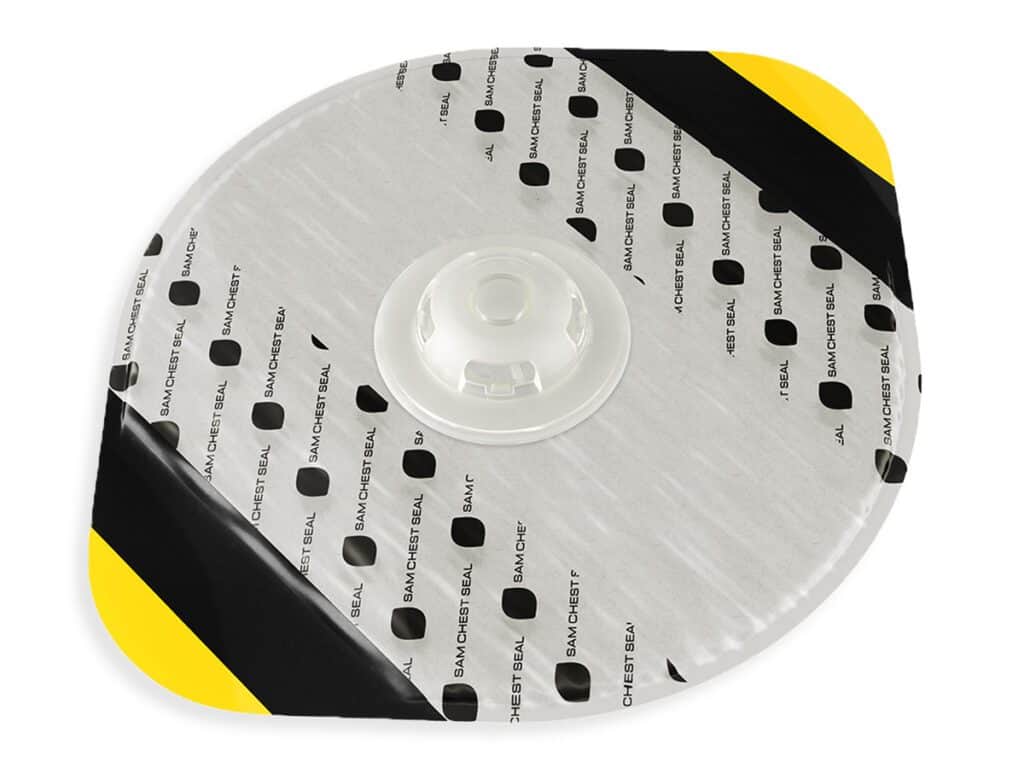
Chest seals are designed to address penetrations or open wounds to the chest. By chest, we mean from the neck to the navel, which includes the front, back and sides. While there are a million things that can cause this problem, a good example of a chest wound is a gunshot wound or knife stabbing.
The chest seal by no means is there to address internal bleeding. What it does do is prevent air from entering into the chest cavity. Coming from someone who has had a lung collapse or spontaneous pneumothorax, I can tell you from experience that it’s one of the most painful things a person can go through. Couple that with whatever caused the trauma in the first place, and I can only imagine the pain. I had a lung collapse on my left lung, which rendered it useless. But if someone were to have it happen to both lungs, well, let’s not go there.
What I learned years ago from my own experience is that the lung “sits” in a vacuum. The moment you introduce air, the lung collapses, making it very difficult to take in air as you breathe.
Vented vs Non-Vented Chest Seal
This seems pretty self-explanatory, a vented chest seal has a vent. But what does that mean exactly?
If there is an open wound to the chest and if in doubt, put a chest seal on. If the blood around the wound is bubbling, it’s a telltale sign a chest seal is required. The vent of a vented chest seal is a one-way vent. Venting air OUT of the chest and not letting any back in. In other words, if applying the chest seal to a cavity with air in it, the vent is there to allow the air to escape.
Applying a Chest Seal
Chest seal application is VERY straightforward. Let me repeat the manufacturer’s instructions right here:
- Clean area.
- Grip the tab and remove the clear liner.
- Place dressing, adhesive side down, centred over wound.
- Press dressing firmly to ensure adhesion.
It’s a bit trickier than applying a Band-Aid, but not by much. It’s a lot gorier, but it is what it is. Again, the emergency medical kit gives us the tools to become the “first responder.” Our job is to delay a life-threatening situation and to transport someone to a hospital. If properly done, we can also minimize any further complications from the injury – in this case, a lung collapse.
Reliable Quality
Once again, we are looking at a military product and one that is USA-made. A key feature to look at is the adhesive. The SAM Chest Seal is designed to work in extreme heat or cold and stick through sweat, blood, hair, etc. It also has a large dome valve that works regardless of the pressure applied – and is meant to minimize obstruction from blood clots and soft tissue.
I haven’t taken the time to put all the specs for these products here. That’s not the point of the post, as you can find this info on S&J Hardware’s website through the links to each product. I intend to show you what to carry, why, when and how to use it and where you can buy it. Looking up specs is something I encourage you to do if any of these products are of interest to you – but I will tell you, nothing here is of mediocre quality. These items are the best of the best military-issue products.
Item 5: Compressed Gauze

You can cover minor wounds with gauze and tape, which is quite handy when the good old Band-Aid isn’t big enough.
Gauze, however, is vital for major wounds. Use gauze in conjunction with larger bandages like the OLAES or Israeli to pack cavities to stop hemorrhaging.
Faratec Inc. makes a vacuum-packed compressed gauze. In a tiny 2″ x 3″ (half-inch thick) package. Un-compressed, we now have 4.5″ x 4.1 yards worth of gauze! It’s a high-quality 6-ply cotton material, guaranteed sterile as long as the package is sealed. With tear-away points on the package, you can quickly deploy the gauze and cover a large wound quickly. In other words, it’s a mighty little package worth every penny.
Item 6: Triangular Bandage
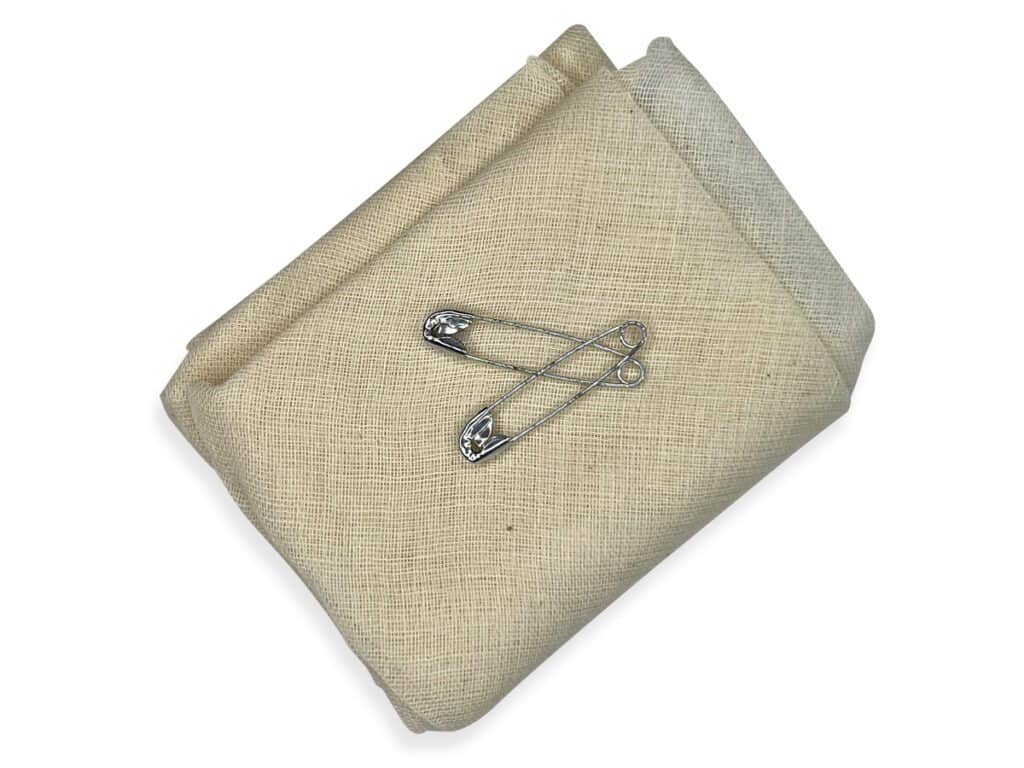
Wow, we finally reached a non-military issue item. Considering it’s Israeli-made, it probably is mil-spec. Once again, in a small 3″ x 4″ package, you will find some natural woven cotton gauze material.
We’ve already learned that bandaging is an obvious use for this item. This piece also doubles as a makeshift sling or assists in immobilizing fractures.
Item 7: Trauma Shears
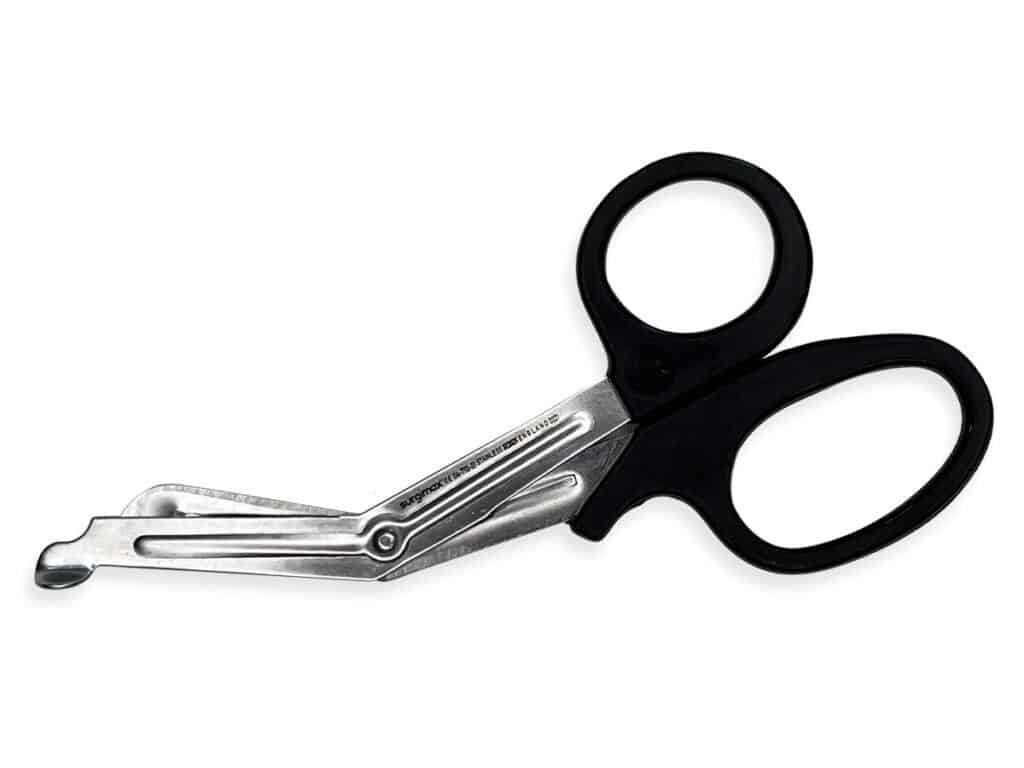
When someone is already in a traumatic state or pain, you may not want to move them to access wounds. Sometimes, moving them may encourage further bleeding – this is where the trauma shears come in. With a blunt tip, these shears are safe to quickly cut any clothing in the way.
Trauma shears are also excellent at cutting hard materials like seat belts, heavy fabrics and even particular wires.
Leatherman makes a wicked pair of trauma shears. While an excellent choice for professionals or gear junkies, at well over $100, it’s a bit steep for the average Joe. God only knows I’ve stared at these myself many times but ended up buying something else I needed more.
At under $10, the EMT Trauma Shears featured in this post do the same job. Since they are affordable, it’s wise to discard them after use. At least that’s what I would do if I were to help a non-family member and my shears got blood on them.
Forget the shears – if you’re helping someone badly injured, you might even find your clothes and shoes covered in blood, which you’ll be discarding as well.
Item 8: Emergency Blanket
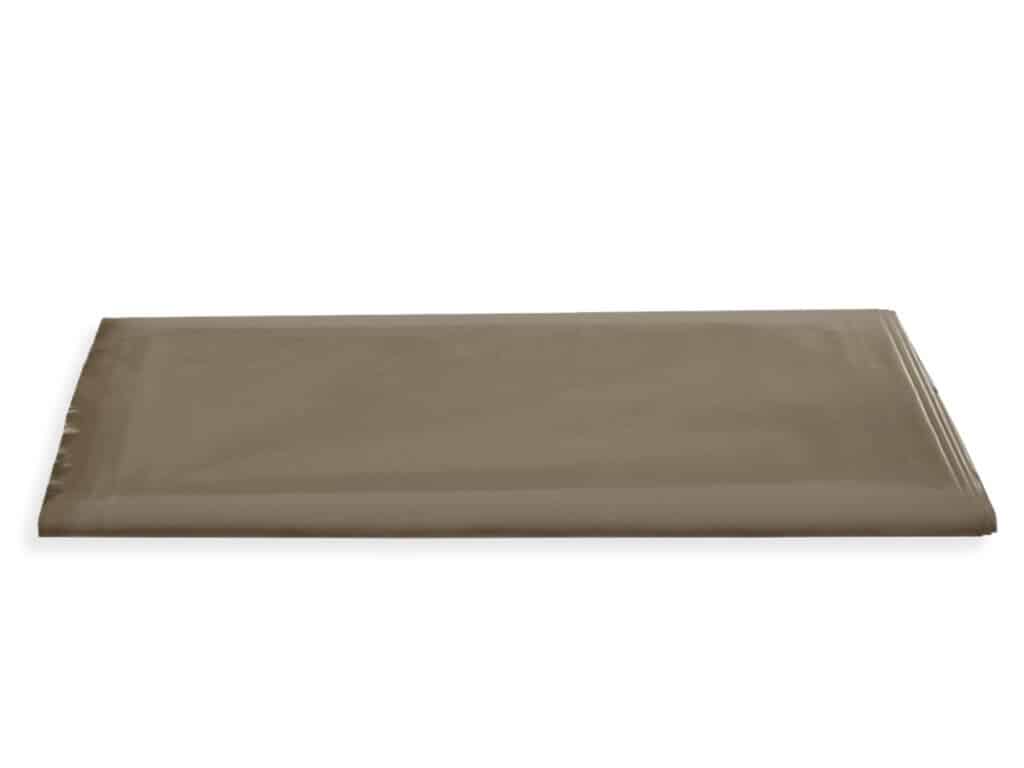
This item is almost cut and pasted as it’s in my last post: Budget Bug Out Bag. I particularly really like this product!
This item is a heavily upgraded version of the typical reflective emergency blanket that seems to be in every kit, not just medical. They hardly take up any space or weight. The military even issues this type of blanket to their troops. It’s to maintain warmth even in the heat of the desert. Why? With enough loss of blood, these blankets help maintain core body temperature.
The typical version of these emergency blankets is cheap or flimsy, which won’t be very helpful when it tears. Many of them will not re-pack either. Today, we again feature a blanket by Lifeheat.
The Lifeheat blanket is a heavy grade: 3 plies, 2.5 mils, to be exact. It is strong enough that two people can carry out a third using it as a makeshift stretcher! Size comes in at a whopping 72″ x 48″ yet packed, it’s only 3″ x 5″ with about an inch of thickness. The weight of this item is a mere 140 grams! It reflects up to 97% of body heat. It makes for an outstanding piece of kit to carry. Get one while you can. Otherwise, keep checking back if out of stock – it’s well worth your time!
Item 9: Storage
Like most items on the planet, I suggest you store your emergency medical kit in a cool dry location away from direct sunlight and somewhere easily accessible.
Ammo Can
The ideal container for the medical emergency kit is an ammo can. Ammo cans are as cheap as dirt. They also protect their contents well. The items in this kit easily fit in an ammo can and can be quickly retrieved. You are looking for a nice deep pocket so to speak. The downside to the ammo can is weight, which makes it ideal for an emergency medical kit that never leaves your home, hunt camp, car, etc.
Pistol Case
Another ideal container for the emergency medical kit is a pistol case. Usually, they are hard plastic and just about the right size. Considering it’s strong enough to protect a pistol, which is worth some serious coin, you can most certainly trust your gauze to it! This route is more expensive than an ammo can, but it’s a lighter and feasible option, especially if you have a spare one.
My Choice for the Emergency Medical Kit: A Military IFAK Bag
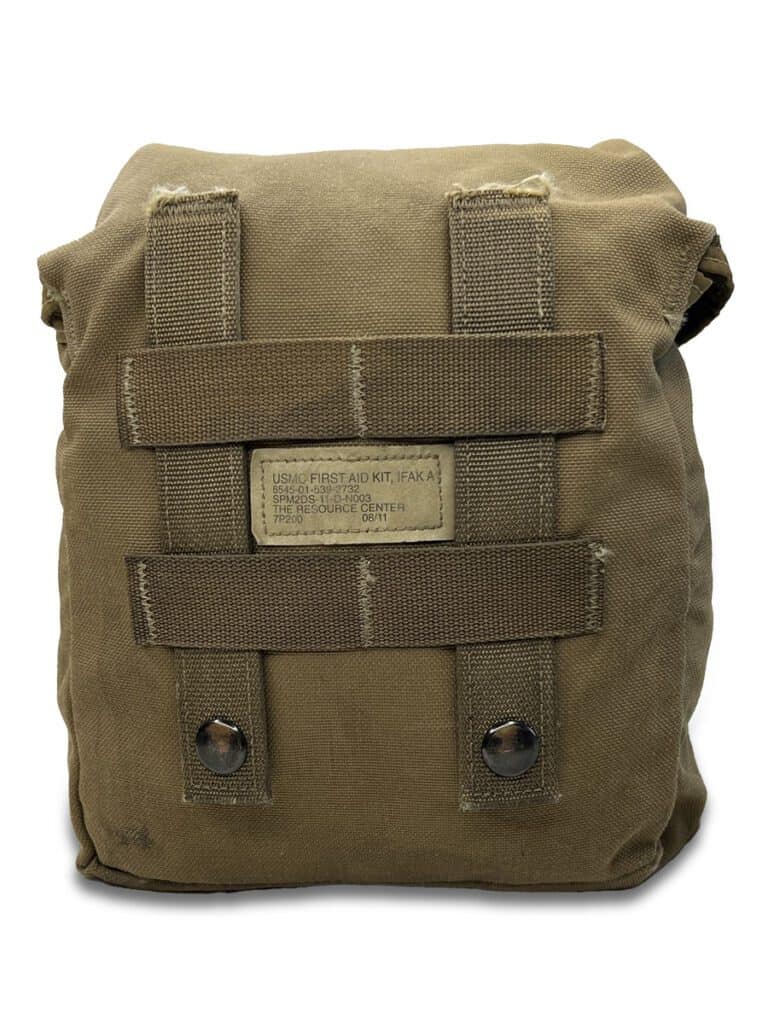
I have a USMC (US Marine Corps) IFAK bag lying around. IFAK means “Individual First Aid Kit”. It used to be my fire kit bag and has been lying around empty. I was going to say how ironic it is that every item listed in the emergency medical kit fits perfectly in this bag with some room to spare. But then again, it is a medical kit bag!
The IFAK bag size filled is 7″ x 9″ with a 4″ depth. Not bad at all! It has Molle straps, which can be attached to almost anything. Weight with contents is also minimal. It’s lighter than a typical water bottle with water in it. Everything is just a hairline snug, which is fine by me. Keeping things snug means it’s secure and provides a basic level of organization.
You’ll need to scour some surplus stores to find this gem – but surplus stores seem to be few and far between these days. If you’re one of the unlucky ones who don’t have one nearby, do a quick Google search, and you might get lucky. More and more surplus items are moving online. The cost was around $20, which is nothing, as the IFAK bag will last forever.
I Got My Emergency Medical Kit, But Now What?
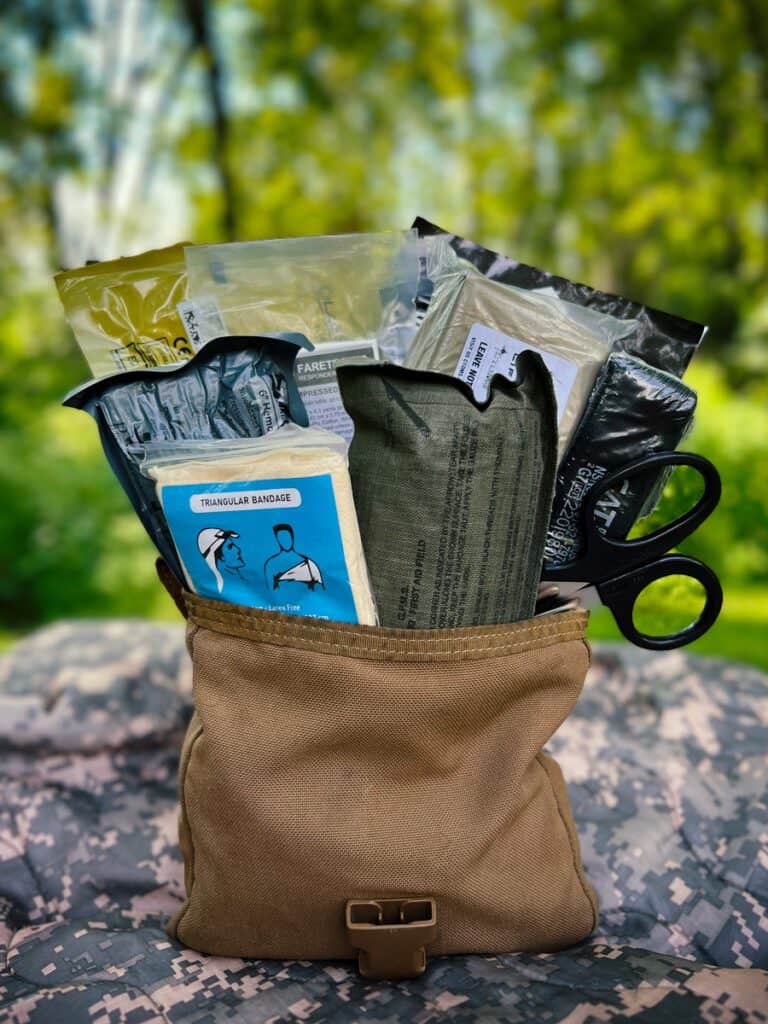
The entire point of the Emergency Medical Kit post is to buy time when bad things happen. Buying time means slowing down life threats, mainly bleeding. This trauma kit should help you buy enough time to get to a real doctor. A doctor friend reviewed this very post for accuracy. He educated me on the medical term for this concept of buying time – it’s called ‘temporizing.’
While the items in the medical kit are not that difficult to learn, it’s also not the type of thing to figure out when minutes or even seconds count. We also have a recurring theme on the blog that gear is only as good as its user!
Stop The Bleed, Medical Trauma Course
S&J Hardware runs a course called Stop the Bleed. It typically runs from 9 AM to about noon and covers wound packing, tourniquet use and dealing with gunshot wounds and severe trauma. The last posted course price was $54.99, and like anything, it’s subject to change. Even if it goes up, my point is it’s money very well spent. Not to mention, it’s only a few hours long, which is beyond bearable.
As a bonus, as part of the course price, there is a 10% discount on any medical products paid for at the course. If this sounds like it’s for you, search for “Stop the Bleed” on S&J Hardware’s website. You can inquire through the store’s contact page if you do not see any courses listed.
St. John’s Ambulance First Aid Training
Understandably, not everyone can get to Belleville, Ontario for first aid training, which is why St. John’s Ambulance is a fantastic alternative. With their various course options, they offer training from emergency first aid and CPR to mental health and even WHMIS.
Again, we are not trying to become doctors, and you do not need to go overboard with this. Our intent is to enhance our skills to use the items in our emergency medical kit. Which hopefully is never.
Emergency Medical Kit
I recently lost my grandmother. She was a wonderful woman who raised me and I am forever grateful to her. It’s also why it’s been so quiet at BushLife, and my apologies to our readers for the delay in posts.
Grandma passed away from natural causes, age to be exact. But it was so sudden and without warning that it came with great shock. She is my inspiration for this post, as it’s bad enough to lose a loved one – it’s a lot worse when we are robbed of them before their time is up.
Spend a few bucks, learn a bit of medicine and be prepared for the unexpected! Your adventures into the woods and even daily city life will improve with confidence and reduced worry, knowing you can care for yourself and those you love most.
Thank you for reading my post. Please consider sharing with your fellow outdoor enthusiasts.
Bookmark this post on Pinterest for future reference!
